When I say the word Marlboro what comes to mind? Is it that iconic cowboy, the Marlboro Man? Even though I personally only caught a minimum of tobacco advertising being born in 1985, as it slowly dwindled away, those ads are imprinted in my mind.
But did you know that Marlboro was originally a woman’s cigarette line?
“The transformation of Marlboro from a luxury women’s cigarette to a macho smoke is a testament to the sophistication of the mass marketing and promotion techniques largely invented by the tobacco industry early in the twentieth century,” writes Brandt.
Looking at tobacco ads over the span of time is a great way to understand the power (and abuse) of marketing. It gives you perspective on advertisements seen today.
Within this section you’ll find ads that touch on culture, science, sex, celebrity and so much more.
As mentioned in the previous section, it was when the “Tobacco Trust” was originally broken up that advertising exploded upwards. Back in the early part of the 1900’s is when advertising ballooned across the nation.
For example, in 1916 Lucky Strike cigarettes were introduced by American Tobacco Company. Over $100 million was spent on advertising these in their first decade alone. The other top brands spent similar amounts.
And remember $100 million back then was worth a lot more, inflated to approximately $2.4 billion to 2021.
The art and science of advertising was built up when cigarette companies were coming to dominate.
Certain ads that wouldn’t work today (especially today’s cancel culture) for a wide variety of reasons, may have been hugely successful in the past.
Witness some early tobacco advertising over the next few pages…
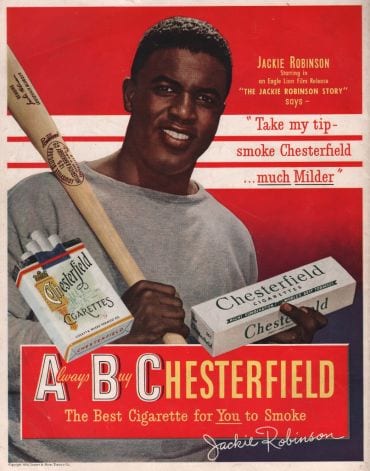
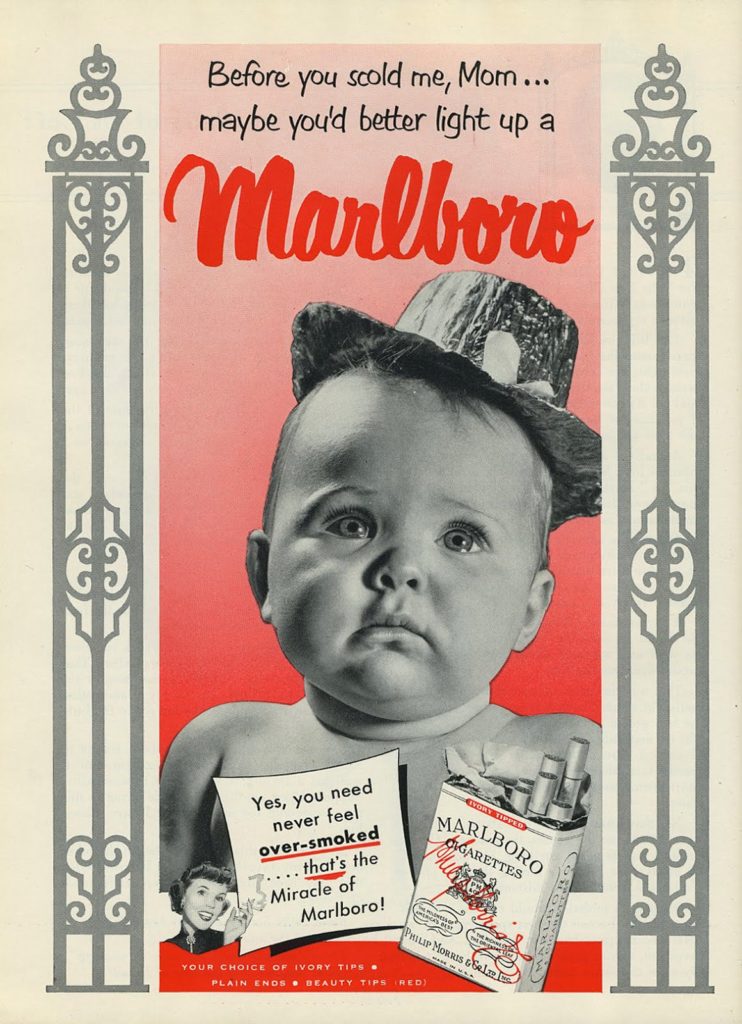

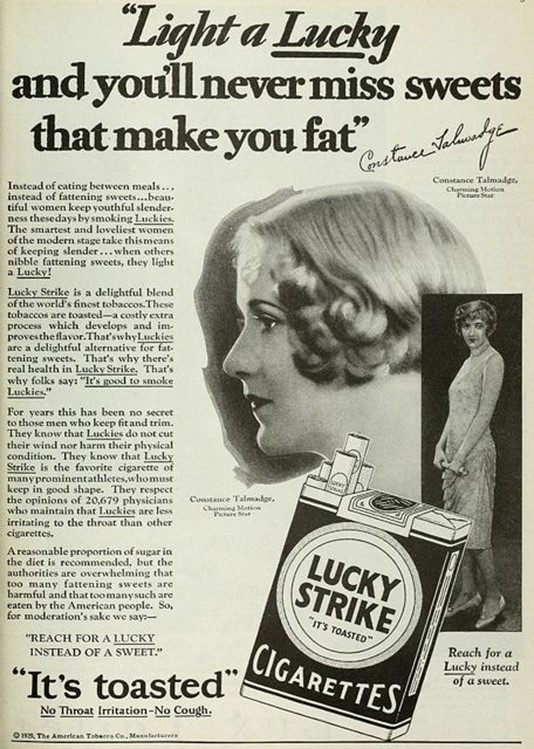
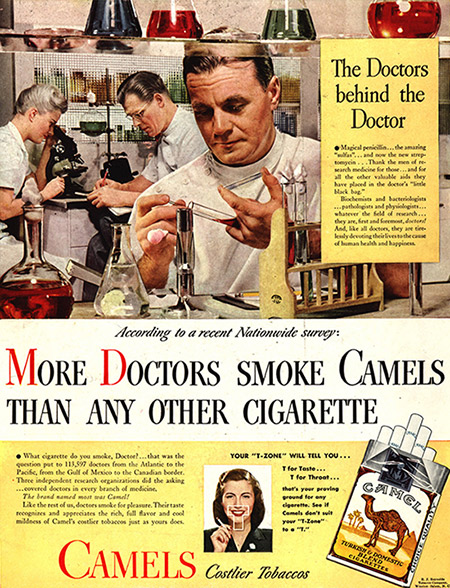
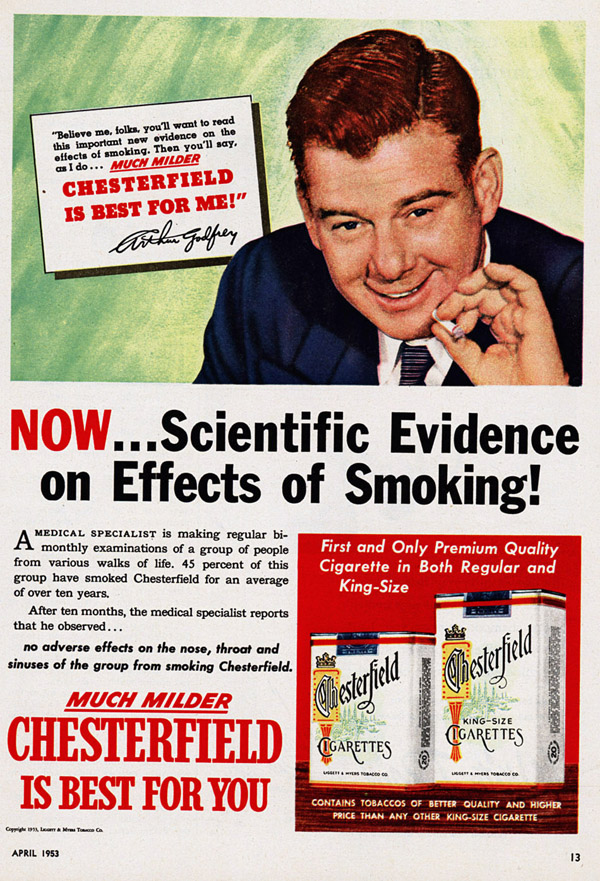
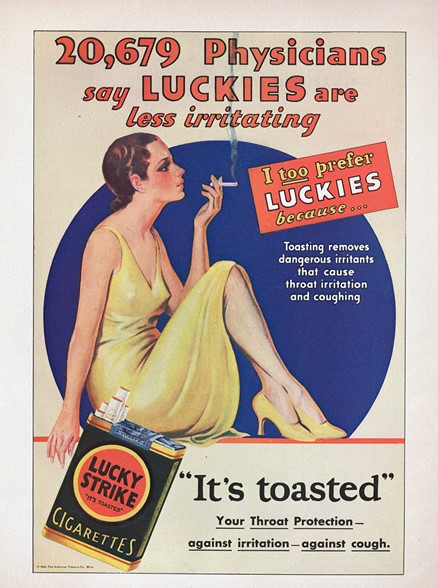
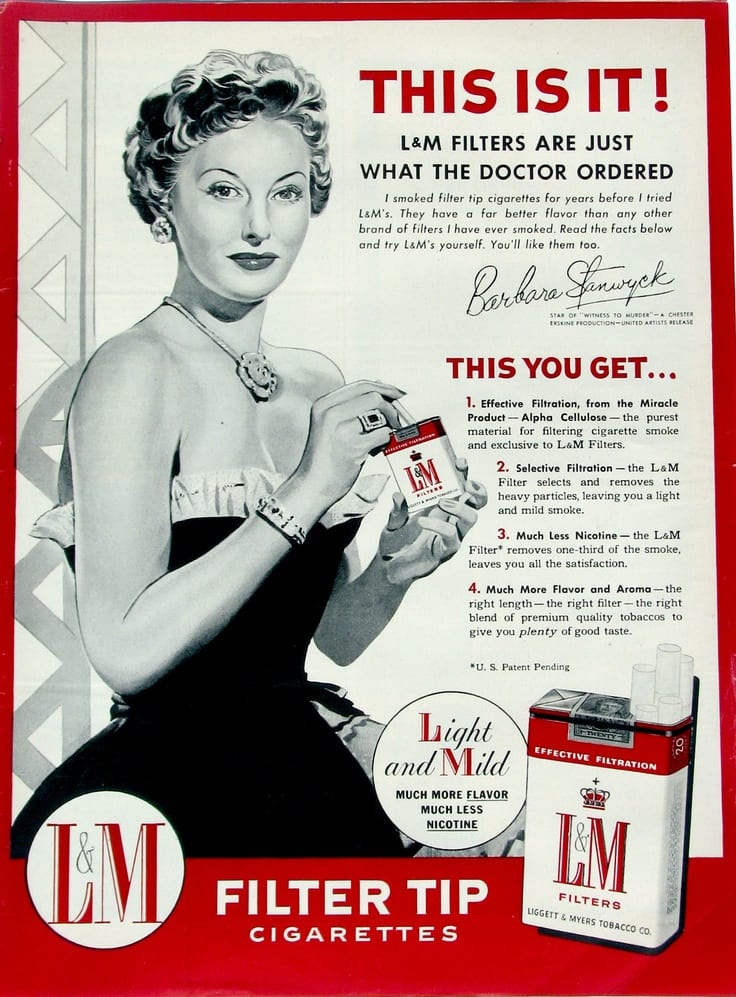
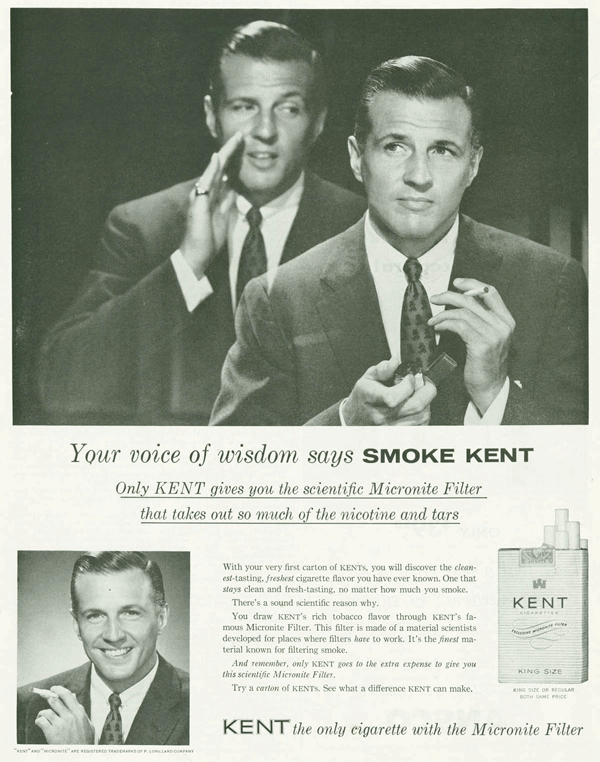
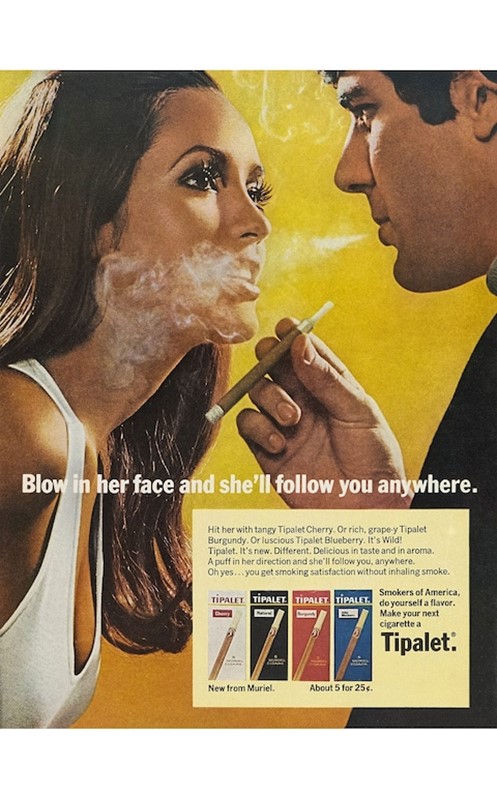



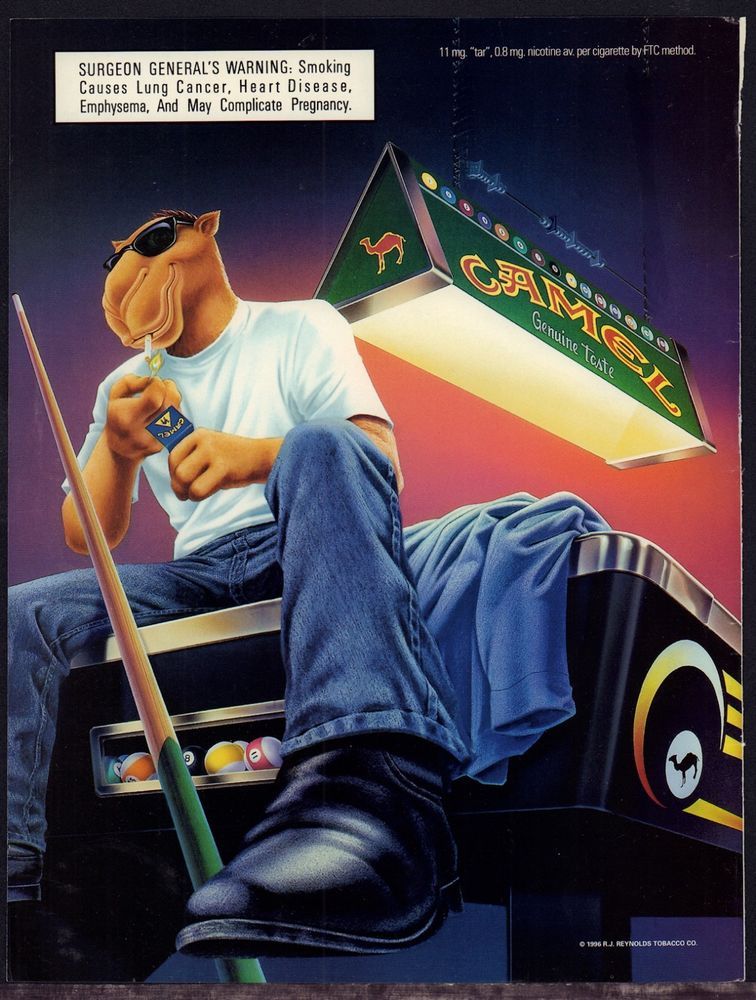
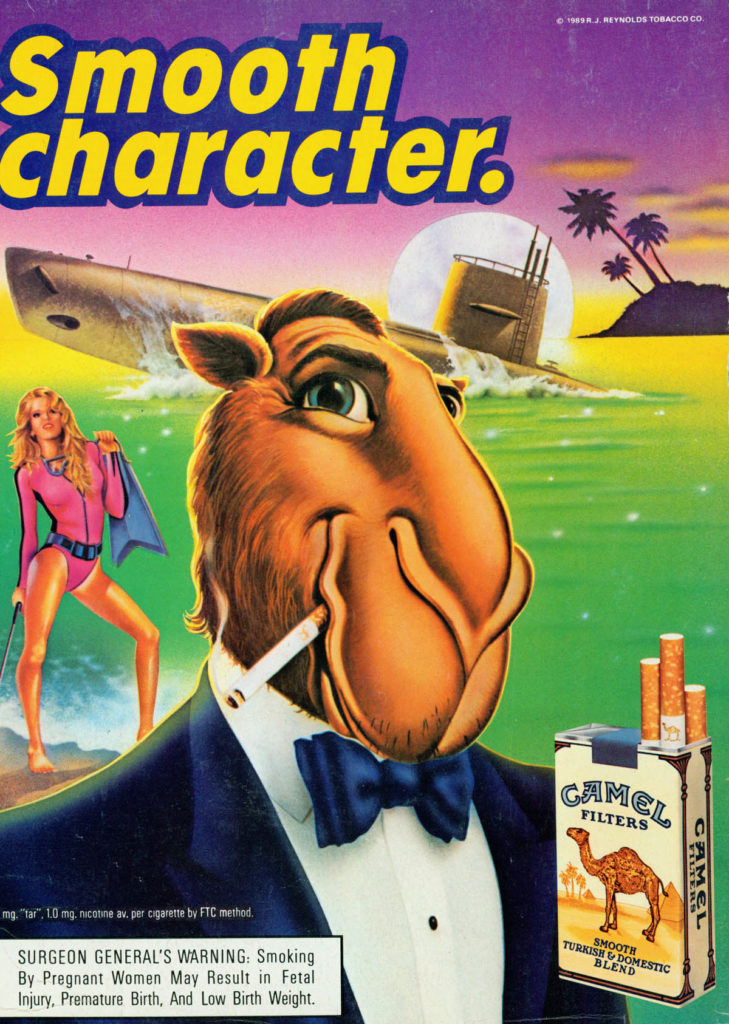
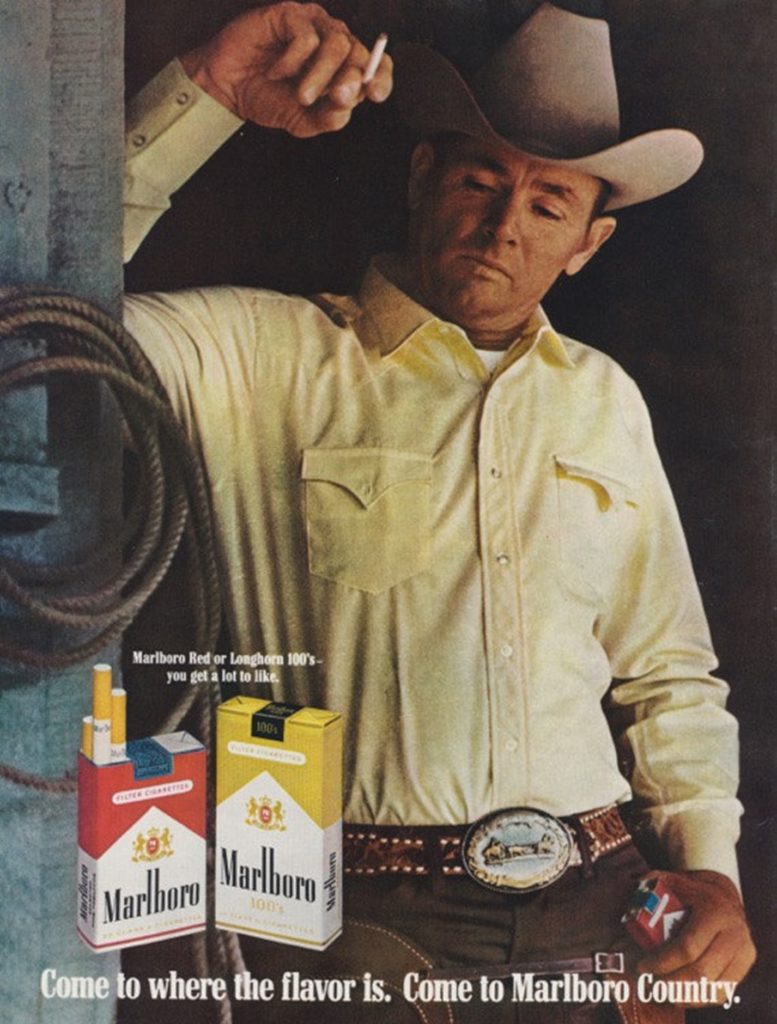
In 1933, Philip Morris entered the market with its namesake brand. It sought to become the cigarette of the American medical profession and ran ads advising “Ask Your Doctor about a Light Smoke.” The 30’s through early 50’s were the decades of doctors and science in advertising.
Almost all of these claims were false. For example, in 1934, Camel advertised “Get a Lift” which read, “The effect continues for approximately half an hour, when the percentage of blood sugar again goes back to the previous level. However, the smoking of another Camel will again increase the blood sugar concentration.”
Perhaps more important than the advertising itself, was the influence that came with paying millions of dollars to publishers.
For example, in 1934, Hygeia, the American Medical Association’s magazine for the public, concludes, “smoking by mothers is in all probability, not an important factor” in infant mortality. This was not in an ad but in editorial. Would this statement have been made without the cigarette advertising money that flooded the AMA?
Eventually the FTC sought to crack down especially on such “scientific” advertisements. In 1955 they issued voluntary guidelines for cigarette makers to avoid making unsubstantiated claims about nicotine or tar content of cigarettes. Five years later, these were mandated.
On TV, it was the FCC’s jurisdiction. After coming up against the FCC several times, in April of 1964, Big Tobacco announced self-regulation of their advertising with The Cigarette Advertising Code. This had little impact on changing commercials and other advertisements.
What did ultimately change television advertising? John Banzhaf, a lawyer, asked the FCC to apply the “fairness doctrine” to cigarette advertising in 1967. This FCC policy required broadcasters to present both sides of controversial issues of public importance in a manner that was deemed honest, equitable, and balanced. The FCC granted a mandate of one antismoking message for every three TV commercials.
These ads proved to lower cigarette consumption. Big Tobacco did not like this and sought to stop it from happening. But they couldn’t. In February of 1969, the FCC issued a public notice that it would seek a ban on all broadcast cigarette advertising.
And in January of 1971, Big Tobacco pulled all advertising off television. The previous year they had bought 8% of all TV advertising, spending $230 million (equivalent of $1.485 billion today). Much of this money got transferred into print media and point-of-sale promotion. Advertising in these other places still proved effective.
Along with the type of ads, Big Tobacco would find out how to target demographics. For example, in 1987 a survey revealed that black neighborhoods had three times as many cigarette billboards as white neighborhoods as this was a highly sought demographic.
A researcher for Camel wrote, “Advertising will be developed with the objective of convincing target smokers that by selecting CAMEL as their usual brand they will enhance their acceptance among peers…Aspiration to be perceived as cool/a member of the in-group is one of the strongest influences affecting the behavior of younger adult smokers. This approach will capitalize on the ubiquitous nature of Marlboro by repositioning it as the epitome of conformity, versus CAMEL the smoke of the cool/in group.”
The company behind Camel cigarettes, R.J. Reynolds, used its advertising budget for promotions and premiums. My father was pretty much a lifelong smoker quitting many times only to restart later. I asked him why he smoked Camels. When he was younger, they gave away free packs at a stockcar racing event he was at. In my father’s case this free giveaway earned a lifelong customer.
I also remember as a kid the “Camel Cash” that my dad collected. This could be redeemed for items from a catalog. I remember looking through the catalog myself, and the various branded goods we had like a big beach towel, cups, hats and more.
Overall, advertising by itself was not what made Big Tobacco what they were. In fact, it was one of the minor pieces involved.
Key Takeaways on Advertising
- Big Tobacco were pioneers in celebrity endorsements, appeals to authority, image advertising and much more in the field.
- Almost all of these ads would later be seen as morally repugnant, full of deceit or in many cases actually become illegal. Over time Big Tobacco became extremely restricted in what they could advertise and where they could do it.
- All the scientific claims used in cigarette advertising were dubious. This shouldn’t come as a big surprise based on their manipulation of science. In advertising, science was used not to share the truth but because it could help peddle cigarettes.
- R.J. Reynolds, the company behind Camel cigarettes, would later be found guilty of targeting children with their Joe Camel ads. They weren’t the only ones. The underage smoker was the most highly coveted smoker despite being illegal because many smokers would be lifelong.
- Advertising is not just about advertising, but the influence it gains by spending large amounts of money. Journals, magazines, news programs would all come under influence in their editorial content due to Big Tobacco’s advertising budget.
Please leave any comments or questions below. Feel free to share it with anyone you’d like.
Links to all published chapters of The Industry Playbook can be found here.
You can also support this project with a tip.

Wonder why the old Bayer ads for heroin, being a safe and non-addictive cough syrup for children, come to mind while reading this? Especially since it could be argued that cigarettes are more dangerous than heroin. Once you realize just how wide-spread this corruption is, it’s really hard to see how this system can possibly go on for much longer.
Several years ago in Congressional hearings investigating the tobacco industry an interesting story came to light when a former member of the Board of Directors of Brown and Williamson cigarettes spilled the beans. It seems that in 1933 when B&W invented Kools, one of the first menthol cigarettes ever made, there was a Board meeting for the purpose of naming the new brand. In the middle of this meeting two research scientists from B&W’s own research and development department came in and told the board that the chemicals used to make the menthol compound in the filters would destroy the cilia linings of the lungs of anybody smoking them. This would leave the smoker’s lungs defenseless and increase the risk of lung cancer more than ten times over the risk run by non-menthol smokers. The Chairman of the Board reacted by decreeing, “Call them Kool with a K and market them to the negroes.” Not surprising since were are talking about a company in North Carolina, which at the time was pretty much a hotbed of racism. I work in retail and our stores sell tons of cigarettes. When the tobacco company “reps” come in quarterly to change our displays and advertising I always tell them they should be ashamed to work for outfits that declare record dividends each quarter while killing off its customer base! Their reaction is usually to offer me coupons that would allow me to purchase a pack of $10 cigarettes for a dollar!
Having said this, I have two favorite posters on my office wall. One has a picture of Charles Darwin standing at the podium in a lecture hall at Harvard University. The caption reads, “I’m not saying we should kill off all the truly stupid people, I’m just saying we should take the warning labels off everything and allow nature to take its course!” Not necessary if you think about it because the cancer warning labels have been on cigarettes since I was 9 years old (and I’m 68 now) and people still patently disregard them, even in Europe where each pack has on its front and back a skull and crossbones logo in addition to the usual health warnings. The second poster depicts an old English gentleman dressed in early 1940’s style whose facial expression make it very clear he is expressing extreme disdain. The caption reads, “Back in my day we didn’t have warning labels on everything because people weren’t so f—-ng stupid!”
Now I’m 68 and I started smoking when I was 13, and believe me I can feel the effects this filthy habit has had on my health and I suspect I’ll be very lucky to reach 70. My father died at 57 thanks to a 2 pack of Salem (menthol) cigarettes per day habit. His dad made it to 71 because he quit smoking after an accident when he was about 32.
Now we can make the argument that the sly and clever, deceptive and misleading and downright false advertising policies pursued by the tobacco companies is to some extent to blame for all the suffering and deaths caused by their products. We can truthfully say that aiming so much of their advertising at kids who are not even old enough to buy cigarettes legally (even before you had to be 21 to do so) is nothing less than positive proof of the pure evil perpetrated upon society in pursuit of the almighty dollar by these companies. We can lay a great deal of the blame on the FDA who should have forced legislation that would have shut them down decades ago once the positive link between tobacco and lung cancer (and all manner of other fatal diseases) was irrefutably established and published by the Surgeon General of the United States. One Surgeon General was actually fired because he publicly stated that nicotine was far more addictive than heroin, and the fact is he was right! Science has proven this over and over again.
Now the fact is that everybody with an IQ higher than the square root of their shoe size KNOWS that tobacco products will kill them, eventually, and therein lies the problem. Nobody, having read the warning labels on a can of gopher bait or a box of rat poison would opt to stir a couple tablespoons of either product into their morning coffee or afternoon smoothie. Why? Because they know death would ensue immediately. The potassium of cyanide or arsenic in these products is lethal in the present tense. Ingest these things and you die right now. Tobacco growers crop dust tobacco with arsenic trioxide as a pesticide and it does not wash off!
Somewhere between Darwin and the old English gent lies a hideous truth. People take up the tobacco habit because they believe they can put that habit down whenever they choose to do so, and in that piece of idiocy they discover their destruction. Smoking, vaping, chewing won’t kill you immediately. It takes a long time. It has to be the slowest and most expensive form of suicide known to man, and because it doesn’t wreck your health or kill you quickly people ignore the danger. No amount of warning labels will ever fix this phenomenon. The fact is the public has to share the blame for their own destruction, their own death, because they lack the intelligence to realize that not everything that looks good TO you is going to be good FOR you, and it is this sure and certain knowledge that keeps the tobacco industry booming. Make no mistake about it. The well informed public is every bit as much to blame for their lung cancer, COPD, emphysema and coronary disease as the tobacco companies are because they literally choose to ignore the facts, disregard the truth and dismiss the dangers.
I mean how stupid do you have to be to willfully and knowingly consume poison?
Big tobacco has known for over a century just exactly how stupid we are, and this knowledge has made them indescribably wealthy. Wealthy enough to buy politicians, the FDA and anybody else that tries to put an end to their murderous pursuit of profit.
If one is to give credit where it is due we must also, in all fairness assign blame in the same manner. Face it, we are a race of lemmings!
Thanks for sharing. I hadn’t come across that story about Kool before. I do touch on many of these concepts in upcoming chapters.